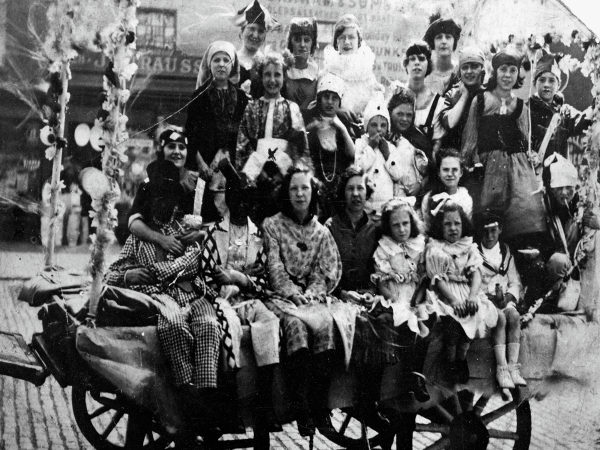A History of Fundraising in Ancoats
By the time the National Health Service was founded in 1948, Ancoats Dispensary had been providing medical care for the people of Ancoats for 120 years. Fundraising was a major part of hospital life. In wealthy areas, residents paid subscriptions to their local hospitals and dispensaries, or paid for the treatment they received. In industrial Ancoats, very few people could afford to commit to annual subscriptions to pay for the running of the Dispensary, or even for their own treatment. The largest subscribers were the churches and manufacturers within Ancoats, and it was on them that the poor depended to pay for their medical care. Ancoats Dispensary depended on wealthy benefactors and patrons for its expansion.
Built in 1828 to dispense medicines and advice to out-patients, the Dispensary soon required wards for in-patients. It was large donations from a number of prosperous local people that paid for the building and maintenance of these hospital wards. These charitable acts not only assisted the Dispensary, but cemented the power and prestige of those individuals within the community.
Frederick Cawley and James Jardine were among the many powerful people who gave money to the Ancoats Dispensary. Hannah Brackenbury was another vital donor. The current Dispensary building, at 24-28 Mill Street, was largely funded by her. She bequeathed £5,000 to pay for the new building, with another £,2000 set aside for ‘establishment charges’. One of the wards was named the Brackenbury Ward in her honour.
Ancoats had a vibrant fundraising culture, and the poorer people of the community contributed where they could. Collection boxes were placed in churches and in workshops and factories. Groups of residents went house-to-house to collect donations, and the Workpeople’s Fund Committee organised walks, dances and football competitions to raise money.
In order to become a patient of Ancoats Dispensary, the poor needed to find somebody to recommend them. Individuals who made annual donations were entitled to recommend a certain number of patients each year. The owners of mills and other workplaces subscribed to dispensaries in order to secure healthcare for their employees. This practice was more than a benevolent gesture - employers could use recommendations to exact compliance from their workers. An extract from writings of one of the doctors at the Dispensary, “Many absolutely die without having had any medical assistance. That this is frequently the case in the district of Ardwick and Ancoats Dispensary is well known to myself and colleagues. It is… no uncommon occurrence for us to find that one, or even two children in a family have fallen victim to measles, scarlet fever, or some other epidemic disease, before a recommendation could be procured, though probably several hours during two or three days may have been spent in begging for one.”

Postcards were made of this image and were sold to the general public by the nurses to help raise funds for the hospital.

Daisy Day was an annual parade held to raise money for Ancoats Dispensary. Artificial daisies were sold in their thousands by flower girls throughout Manchester. There was also a parade, which set off from Market Street, and wound its way through the streets of Ancoats before ending at Belle Vue Gardens. The photograph above is from 1923 and shows children from Ancoats in fancy dress ready for the parade. “Greater Ancoats has done wonders to make the parade a success and it was fitting that its own people, rather than the more fashionable parts of the city, should see the show.”
In the Summer of 2012, the Fight to Save the Dispensary campaign group began their own fundraising. At the beginning of each Community Meeting people would donate whatever they could so that at least we could pay for basic materials such as paper and printer ink. We were also able to pay for materials to make Questionnaire boxes. Many people within the group donated not only their valuable time but helped to fund refreshments at the vigil.
During ADT’s campaign, we were generously supported by both Manchester FC United who ran a social event at The Miners Club in Moston with live music, a raffle, and the opportunity to watch a short film in their small cinema about the Ancoats area.
Manchester City Football Club also supported the campaign by offering us the opportunity to have a Bucket Collection at their grounds during a Saturday football match where we raised the grand total of £900!
